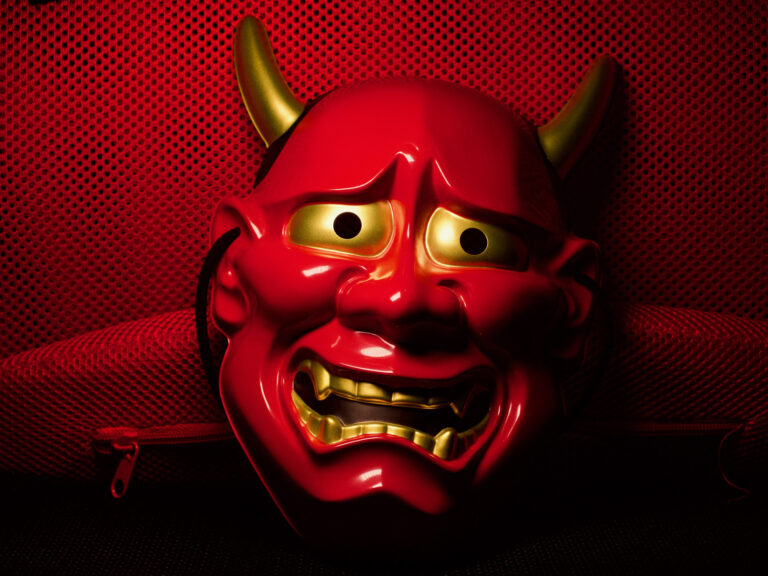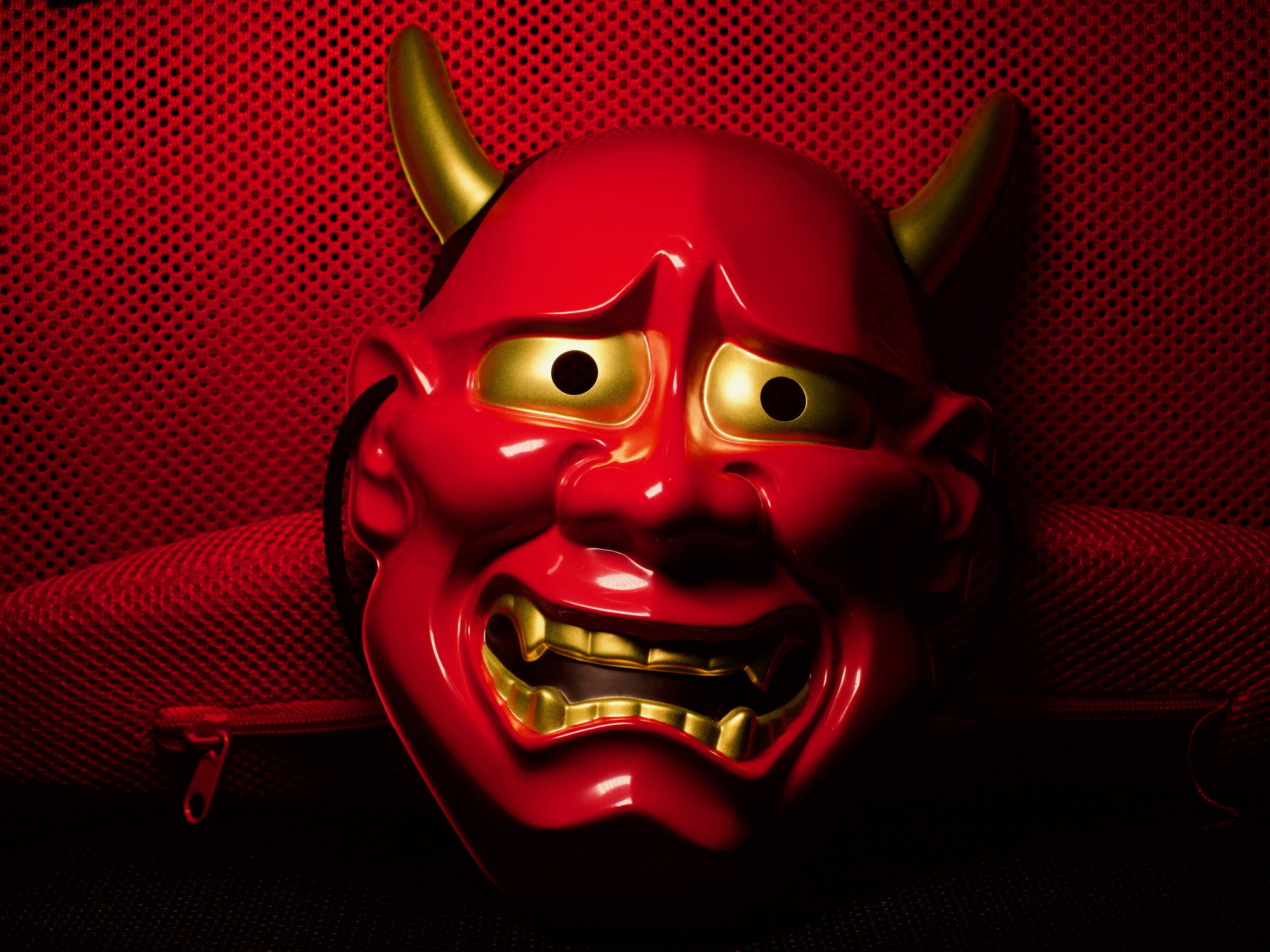
[ad_1]

In some of their earliest iterations, they were considered to be responsible for natural disasters or destructive forces like thunder and lightning. In other tales, they appear as grotesque, loincloth-clad ogres with sharp teeth and horns. Sometimes, they are depicted as mountain-dwelling crones shunned by society. In some modern iterations, they can even be cute and gentle.
These entities can all be categorized as oni — supernatural figures that appear across Japanese literature, folklore, art and religion, frequently taking the form of ogres or demons.
“[They] are considered to be evil, but not entirely evil,” says Noriko T. Reider, a professor of Japanese language and literature at Miami University and author of Japanese Demon Lore: Oni from Ancient Times to the Present. “There are lots of contradictory elements in there. And historically, it kind of changes, like an amoeba.”
In short, an oni can wear many faces. Yet their amorphous — and multifaceted — nature has allowed them to take on a host of metaphorical meanings that mirror the evolution of Japanese society and culture. What’s more, their ubiquity in popular culture continues to this day, with appearances across anime, video games, TV and film.
What Is an Oni?
Although oni are often liked to their counterparts in Western culture — demons and ogres, namely — their complexity doesn’t really allow for a direct, 1-to-1 comparison. Primarily, oni are shown as evil and fierce creatures, with a well-known appetite for murder and cannibalism.
Read More: The Mysterious Origin of Dragons
In Japanese folklore and art, oni are characteristically giant in size and strength, with a fearful appearance. They’re often thought of as red, pink or blue-ish in color, sporting monstrous horns, three toes and three fingers. (And, sometimes, three eyes.)
This detail of a Japanese print by famed artist Katsushika Hokusai (1760–1849) shows two oni — one with one eye and one with three eyes. (Credit: Public Domain/Columbia University)
“When we think about visualizations of oni, [they have] horns, skin color that’s red, green, black or blue with conspicuous canine teeth and masculine body types — with tiger-skin loincloths,” says Reider. “That is the folkloric way that they’re often depicted in pictures.”
Still, looking at oni in a different context shows that they aren’t always monstrous ogres with a taste for flesh. (In some traditions and depictions, for example, they can bring prosperity to other humans.) And while their visual imagery is usually masculine — loincloth and all — there are plenty of female oni, some of whom are enchantresses born out of feelings of jealousy, vengeance and shame.
“When an oni is female, they are called kijo, which means ‘oni woman,’” adds Reider. “Before [those depictions], an oni could identify as male, female or ‘it.’ An artificial object could even be an oni.”
The Origins of Oni
Given their amorphous, ever-changing nature, it’s perhaps no surprise that onis have no single, unifying origin story. Indeed, in her book Japanese Demon Lore, Reider describes four distinct cultures and traditions where oni stories stem from: Japanese, Chinese, Buddhist and onmyōdō, a traditional Japanese blend of cosmology, occultism and natural sciences based on the Chinese theories of “yin and yang.”
In the Japanese line, for example, the oni’s genesis is attributed to people’s fear of the destructive power of natural forces like lightning, thunder and earthquakes, according to Kondō Yoshihiro, author of Nihon no oni: nihon bunka tankyū no shikaku (or Japanese Oni: Perspectives on the Search for Japanese Culture.) Other scholars, like Wakamori Tarō, argue that they came from inhabitants of ancient Japan who thought that they were evil spirits from deep in the mountains.
Another theory suggests that the concept of oni (or at least the word itself) is Chinese in origin — and may have been introduced to Japan from China alongside Buddhism. As such, some scholars believe that the idea of the oni is purely Buddhist, while others claim that they aren’t exclusive to a particular theology.
“In every society, there is some evil, dark [presence.] And Japanese did have evil deities and violent deities,” says Reider. “And because of Chinese influences, the character for oni was taken from China.”
Read More: Are Real-Life Vampires Walking Among Us?
“We didn’t have any writing system [in ancient Japan],” adds Reider. “And so we borrowed the writing system from China. […] In Chinese, that character means something a little different. It’s like a zombie — those who are dead become oni. But that, of course, is incorporated into Japanese oni, too.”
Legend of the Drunken Demon
In folklore, oni are often characterized as malicious troublemakers, capable of terrible deeds like spreading disease and attacking humans. They’re also known to emerge from the abyss of hell itself — or Jigoku in Japanese Buddhism — to frighten mortals, or torment evildoers who are sent there.
One of Japan’s most well-known oni legends is the tale of Shuten Dōji, or “the drunken demon.” A powerful, fearsome oni, Shuten Dōji and his band of thugs rampaged through medieval Kyoto, capturing daughters of nobility to drink their blood and devour their flesh. Eventually, Shuten Dōji is defeated by a warrior-hero named Minamoto no Yorimitsu, who assaults the drunken demon’s palace and cuts off his head.
A woodblock print by Japanese artist Utagawai Yoshitsuya (1822 – 1866) shows hero Minamoto slaying the ogre-like oni Shuten Dōji at his mountainous lair. (V&A Images / Alamy Stock Photo)
“Shuten Dōji is the story that inspired me to start working on oni,” says Reider. “When I was teaching, I wanted to introduce Shuten Dōji [to my students] because it’s such a famous story and it wasn’t in [English] translation.”
For Reider, part of the oni’s allure is their deep symbolic meaning, often standing in for marginalized people or groups in society. In the case of Shuten Dōji, the titular drunken oni and his comrades can be seen as representative of voices outside of Japan’s imperial rule — making their somewhat sympathetic portrayal that much more compelling.
Oni in Anime, TV and Film
You don’t have to look very far to see that oni are very much alive and well in pop culture today. The popular and critically acclaimed anime series Demon Slayer: Kimetsu no Yaiban features oni as antagonists, borrowing heavily from their depiction in folklore. (They still eat human flesh and drink blood, for example.) Meanwhile, the decidedly more kid-friendly Netflix series Oni: Thunder God’s Tale features oddball oni who are cuddly and goofy.
“Media like manga and anime are great vehicles to hand down these folkloric characters,” says Reider. “That’s how they’re introduced to young people. And often they change as [creators] add certain characteristics.”
Characters who resemble oni also appear in Hayao Miyazaki’s much-loved animated film Spirited Away, which won the Academy Award for Best Animated Feature in 2003. The spirits who populate the films are complex and multifaceted, like oni. But Reider points to the witch Yubaba in particular, who shares similarities with yamauba — a type of oni often depicted as an old, mountain-dwelling sorceress with white hair. (In the film, Yubaba even transforms the protagonist’s parents into pigs and threatens to eat them, a possible nod to oni’s cannibalistic tendencies.)
The witch Yubaba towers over protagonist Chihiro in Spirited Away. (Credit: Studio Ghibli)
“[She’s] yamauba-esque,” adds Reider, also the author of Mountain Witches, a book on yamauba published in 2021. “It’s not exactly like that.”
The fact modern iterations of oni often put their own spin on things, says Reider, is reflective of the ways that they’ve evolved and changed across generations.
“It just changes,” she adds. “It kind of evolves with the times — that’s why it’s so interesting.”
Read More: Why We Share Stories of Local Ghosts
[ad_2]